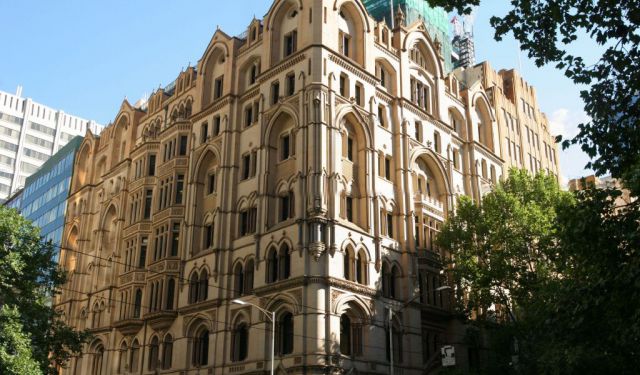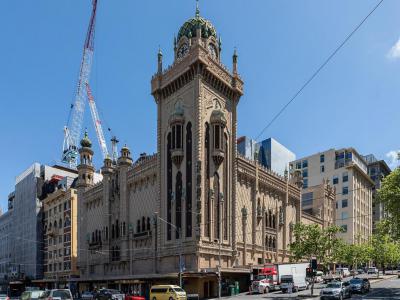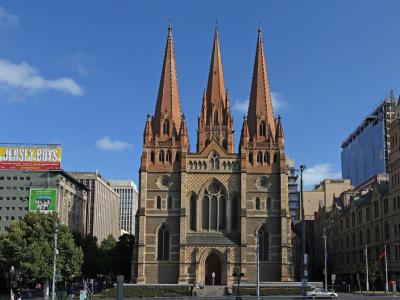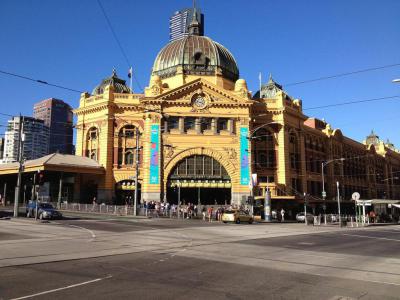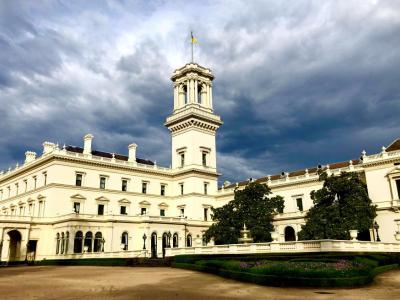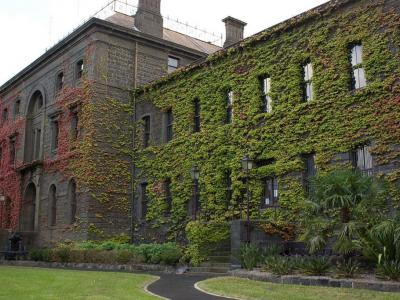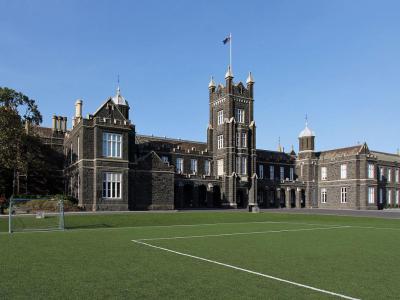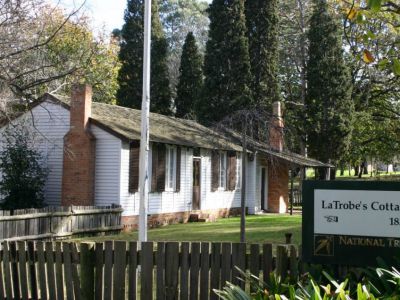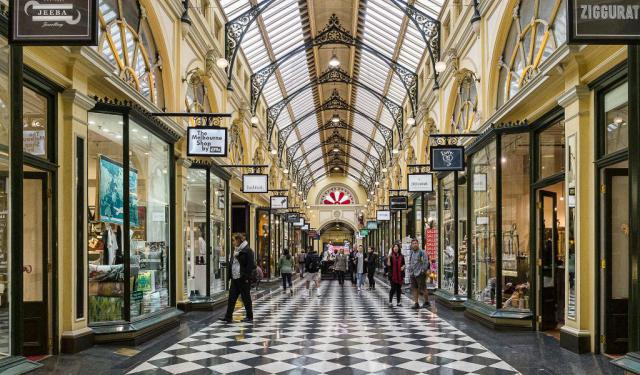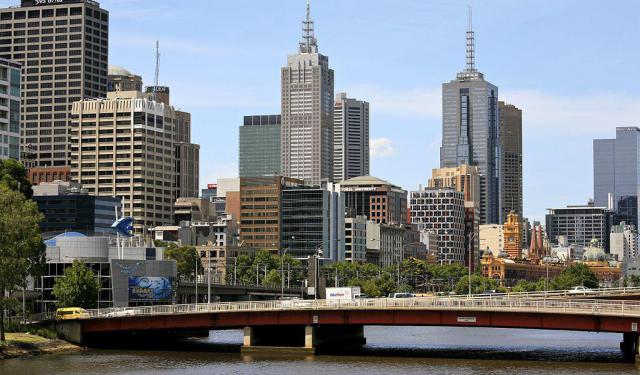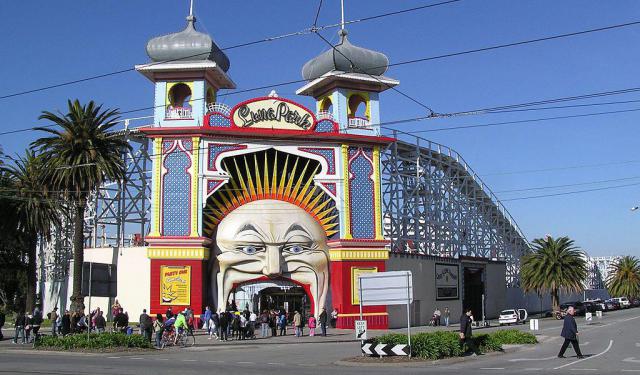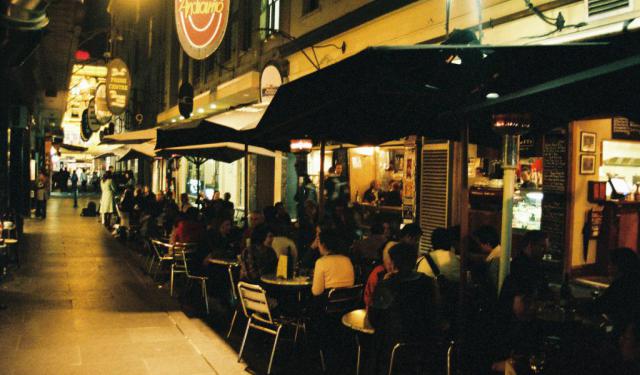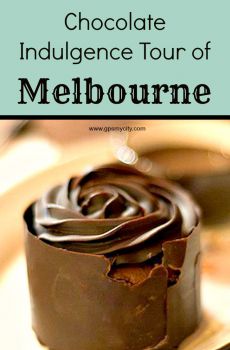Historical Buildings Walking Tour (Self Guided), Melbourne
Melbourne's architecture is a rich cocktail of styles ranging from those practiced in the early years of European settlement of Australia to the more modern ones. Among the historical buildings particularly noticeable here are those from the Victorian era, forming an essential part of the city's heritage.
The Old Melbourne Gaol once served as a prison, from 1842 to 1929, and is infamous for housing some of Australia's most notorious criminals like bushranger Ned Kelly.
The Forum Theatre, a stunning example of the Moorish Revival style, has been a cultural hub since its opening in 1929. Having hosted a wide range of shows, from cinema to live music, this is a cherished part of Melbourne's entertainment history.
On the other hand, Saint Paul's Cathedral, a Neo-Gothic marvel of the Anglican Church, completed in 1891, is a spiritual and visual treasure in the heart of the city.
Another iconic symbol of Melbourne is Flinders Street Station, dating back to 1854. Its distinct yellow facade and bustling train platforms have made it a central meeting point for generations of Melburnians.
Meanwhile, the architectural grandeur of Government House, the official residence of the Governor of Victoria since the late 19th century, makes it a picturesque landmark in its own right.
Victoria Barracks, a former military base from the 1850s, once played a vital role in Australia's national defense. Its heritage-listed buildings continue to stand as a testament to the country's military history.
The solemn structure of Melbourne Grammar School, founded in 1858, reflects the enduring commitment to education in Melbourne, while the quaint La Trobe's Cottage, formerly home to Victoria's first Lieutenant-Governor, provides a glimpse into early colonial life in the city.
All these notable locations allow the curious and history enthusiasts alike a glimpse into Melbourne's storied past. If you wish to delve deeper into it and get a perfect backdrop for your own historical journey through this incredible city, take our self-guided walking tour!
The Old Melbourne Gaol once served as a prison, from 1842 to 1929, and is infamous for housing some of Australia's most notorious criminals like bushranger Ned Kelly.
The Forum Theatre, a stunning example of the Moorish Revival style, has been a cultural hub since its opening in 1929. Having hosted a wide range of shows, from cinema to live music, this is a cherished part of Melbourne's entertainment history.
On the other hand, Saint Paul's Cathedral, a Neo-Gothic marvel of the Anglican Church, completed in 1891, is a spiritual and visual treasure in the heart of the city.
Another iconic symbol of Melbourne is Flinders Street Station, dating back to 1854. Its distinct yellow facade and bustling train platforms have made it a central meeting point for generations of Melburnians.
Meanwhile, the architectural grandeur of Government House, the official residence of the Governor of Victoria since the late 19th century, makes it a picturesque landmark in its own right.
Victoria Barracks, a former military base from the 1850s, once played a vital role in Australia's national defense. Its heritage-listed buildings continue to stand as a testament to the country's military history.
The solemn structure of Melbourne Grammar School, founded in 1858, reflects the enduring commitment to education in Melbourne, while the quaint La Trobe's Cottage, formerly home to Victoria's first Lieutenant-Governor, provides a glimpse into early colonial life in the city.
All these notable locations allow the curious and history enthusiasts alike a glimpse into Melbourne's storied past. If you wish to delve deeper into it and get a perfect backdrop for your own historical journey through this incredible city, take our self-guided walking tour!
How it works: Download the app "GPSmyCity: Walks in 1K+ Cities" from Apple App Store or Google Play Store to your mobile phone or tablet. The app turns your mobile device into a personal tour guide and its built-in GPS navigation functions guide you from one tour stop to next. The app works offline, so no data plan is needed when traveling abroad.
Historical Buildings Walking Tour Map
Guide Name: Historical Buildings Walking Tour
Guide Location: Australia » Melbourne (See other walking tours in Melbourne)
Guide Type: Self-guided Walking Tour (Sightseeing)
# of Attractions: 8
Tour Duration: 2 Hour(s)
Travel Distance: 4.1 Km or 2.5 Miles
Author: vickyc
Sight(s) Featured in This Guide:
Guide Location: Australia » Melbourne (See other walking tours in Melbourne)
Guide Type: Self-guided Walking Tour (Sightseeing)
# of Attractions: 8
Tour Duration: 2 Hour(s)
Travel Distance: 4.1 Km or 2.5 Miles
Author: vickyc
Sight(s) Featured in This Guide:
- Old Melbourne Gaol
- Forum Theatre
- St. Paul's Cathedral
- Flinders Street Station
- Government House
- Victoria Barracks
- Melbourne Grammar School
- La Trobe's Cottage
1) Old Melbourne Gaol (must see)
The Old Melbourne Gaol, situated on Russell Street in Melbourne, is a historical site that serves as both a museum and a former prison. It comprises a sturdy bluestone building, an adjoining courtyard, and is situated in close proximity to the old City Police Watch House and City Courts buildings. The construction of this facility commenced in 1839, and it operated as a prison from 1842 to 1929. During this period, it housed and carried out executions for some of Australia's most infamous criminals, such as Ned Kelly, a notorious bushranger, and Frederick Bailey Deeming, a serial killer.
A total of 133 individuals met their fate on the gallows here. Although it had a brief role during World War II, the gaol officially ceased to function as a prison in 1924. Some parts of the facility were incorporated into RMIT University, while the remainder was transformed into a museum.
This three-story museum is dedicated to preserving and showcasing the history of the gaol, including information and artifacts related to both the prisoners and the staff who worked there. Among the exhibits are death masks of the executed criminals. At one point, the museum also featured Ned Kelly's skull, which was unfortunately stolen in 1978, as well as the pencil used by Colin Campbell Ross, who was wrongfully convicted, to assert his innocence in writing before his execution.
Additionally, there are claims by paranormal enthusiasts that the museum is haunted, with reports of ghostly apparitions and unexplained voices in the vicinity of the former prison cells.
A total of 133 individuals met their fate on the gallows here. Although it had a brief role during World War II, the gaol officially ceased to function as a prison in 1924. Some parts of the facility were incorporated into RMIT University, while the remainder was transformed into a museum.
This three-story museum is dedicated to preserving and showcasing the history of the gaol, including information and artifacts related to both the prisoners and the staff who worked there. Among the exhibits are death masks of the executed criminals. At one point, the museum also featured Ned Kelly's skull, which was unfortunately stolen in 1978, as well as the pencil used by Colin Campbell Ross, who was wrongfully convicted, to assert his innocence in writing before his execution.
Additionally, there are claims by paranormal enthusiasts that the museum is haunted, with reports of ghostly apparitions and unexplained voices in the vicinity of the former prison cells.
2) Forum Theatre
Melbourne has long been considered the cultural capital of Australia, and the Forum Theatre is one of the city’s best known cultural landmarks. Formerly known as the “State Theatre”, it was originally built as a movie palace. When the theatre opened in 1929, it had the largest seating capacity in the country with space for 3371 people. The building was designed by John Eberson, an American architect, who was well known around the world for his theatres. The exterior was in the Moorish revival style, with decadent minarets, cupola and an attention grabbing clock tower. The interior was done in an ornate Greco-Roman style and the ceiling was peppered with stars to emulate the twinkling night sky.
Today the theatre is no longer a cinema, but has for many years been used for a wide variety of theatrical, musical and cultural performances. Entertainers such as Oasis, Katy Perry and Ozzy Osborne have performed there and it is a regular venue for the Melbourne International Film Festival and Melbourne International Comedy Festival. The Forum Theatre has been on the Victorian Heritage Register since 1981.
Today the theatre is no longer a cinema, but has for many years been used for a wide variety of theatrical, musical and cultural performances. Entertainers such as Oasis, Katy Perry and Ozzy Osborne have performed there and it is a regular venue for the Melbourne International Film Festival and Melbourne International Comedy Festival. The Forum Theatre has been on the Victorian Heritage Register since 1981.
3) St. Paul's Cathedral
Sitting just across from the hustle of Flinders Street Station, Saint Paul’s Cathedral is a calm reminder to everyone that Melbourne’s skyline had a spiritual side long before espresso bars and laneway murals took over. This spot is more meaningful than it looks: it was here that the very first Christian service in the fledgling settlement was held in 1835, after which the site briefly served as a corn market. Indeed, only in Melbourne could a place go from a prayer to a produce before becoming a cathedral...
The building itself is the work of English architect William Butterfield, who designed it in the Gothic Revival style—characterized by soaring arches with a slightly rebellious streak. The foundation stone went in during 1880, the cathedral was consecrated in 1891, and the spires joined the complex in the 1920s, giving Saint Paul’s the silhouette that now anchors the Central Business District.
Inside, the soundscape is just as impressive. The T.C. Lewis organ, shipped from England, remains one of the finest surviving creations of the celebrated 19th-century organ maker. And if you happen to be nearby on a Wednesday or Friday evening—or on a Sunday morning—you’ll hear the bells, too. Cast in 1889 at London’s Whitechapel Bell Foundry, they offer something rare: true 13-bell change ringing, a tradition that usually stays on English soil.
Saint Paul’s keeps its doors open most of the week, so step inside whenever the mood strikes. Whether you’re drawn by the architecture, the music, or simply the peaceful break from the city’s pace, the cathedral delivers a moment of calm in the middle of Melbourne’s constant motion...
The building itself is the work of English architect William Butterfield, who designed it in the Gothic Revival style—characterized by soaring arches with a slightly rebellious streak. The foundation stone went in during 1880, the cathedral was consecrated in 1891, and the spires joined the complex in the 1920s, giving Saint Paul’s the silhouette that now anchors the Central Business District.
Inside, the soundscape is just as impressive. The T.C. Lewis organ, shipped from England, remains one of the finest surviving creations of the celebrated 19th-century organ maker. And if you happen to be nearby on a Wednesday or Friday evening—or on a Sunday morning—you’ll hear the bells, too. Cast in 1889 at London’s Whitechapel Bell Foundry, they offer something rare: true 13-bell change ringing, a tradition that usually stays on English soil.
Saint Paul’s keeps its doors open most of the week, so step inside whenever the mood strikes. Whether you’re drawn by the architecture, the music, or simply the peaceful break from the city’s pace, the cathedral delivers a moment of calm in the middle of Melbourne’s constant motion...
4) Flinders Street Station
If you’re standing at the corner of Flinders and Swanston Streets and wondering why everyone else is looking up—congrats, you’ve found Flinders Street Station! It opened in 1854 as the terminus of Australia’s very first railway, back when “catching a train” meant something closer to “braving an experiment.” Today, it’s still one of Melbourne’s busiest transport hubs, funneling commuters across the suburbs and deep into the city’s daily rhythm.
The building you see now arrived later, finished in 1909. It’s an Edwardian creation that doesn’t believe in subtlety—domes, arches, towers, and enough ornamentation to fuel a century of urban legends. The curious fact associated with this building is that its design was mistakenly swapped with plans for Victoria Terminus in Bombay. No proof, however, but the rumour is almost as iconic as the station itself. Heritage-listed and instantly recognisable, it remains one of Melbourne’s most photographed faces.
And then there are the clocks. If someone in Melbourne tells you to meet them “under the clocks,” they’re not being poetic—that’s the row of indicator clocks above the main entrance. Another classic rendezvous point here is “On the steps.” Basically, this station doubles as both a transit hub and the city’s unofficial meeting app...
Its location doesn’t hurt either. Step outside and you’re right beside Federation Square, the Yarra River, and the maze of laneways, cafés, and arcades that make up the Central Business District. A truly perfect launchpad for whatever you’re doing next...
Indeed, whenever you're in Melbourne, even if you’re not catching a train, this building is always a delight to look at. The food inside is tempting, and—bonus—the station turns into a glowing postcard at night. So, make sure to have a camera handy; it likes the attention...
The building you see now arrived later, finished in 1909. It’s an Edwardian creation that doesn’t believe in subtlety—domes, arches, towers, and enough ornamentation to fuel a century of urban legends. The curious fact associated with this building is that its design was mistakenly swapped with plans for Victoria Terminus in Bombay. No proof, however, but the rumour is almost as iconic as the station itself. Heritage-listed and instantly recognisable, it remains one of Melbourne’s most photographed faces.
And then there are the clocks. If someone in Melbourne tells you to meet them “under the clocks,” they’re not being poetic—that’s the row of indicator clocks above the main entrance. Another classic rendezvous point here is “On the steps.” Basically, this station doubles as both a transit hub and the city’s unofficial meeting app...
Its location doesn’t hurt either. Step outside and you’re right beside Federation Square, the Yarra River, and the maze of laneways, cafés, and arcades that make up the Central Business District. A truly perfect launchpad for whatever you’re doing next...
Indeed, whenever you're in Melbourne, even if you’re not catching a train, this building is always a delight to look at. The food inside is tempting, and—bonus—the station turns into a glowing postcard at night. So, make sure to have a camera handy; it likes the attention...
5) Government House
Government House is one of Melbourne’s most stunning buildings and the official residence of Victoria’s Governor. It was also home to Australia’s Governor-General, following federation, from 1901 to 1930. The house is located next to the Royal Botanic Gardens on land that was set aside by the first Governor of Victoria Charles La Trobe in 1841.
In 1870 the decision was made to finally construct a purpose built Victorian Government House there. It is the largest government house anywhere in the former British Empire. The flamboyant style of the building reflects the immense wealth of the state at that time as a direct result of the gold rush.
Government House is generally closed to the public as it is in use for state events and as the Governor’s private residence. However, tours may be available on Mondays and Wednesdays if you make an advance booking. The ballroom is said to be the largest in the southern hemisphere and within the British Empire. Every Australia Day it is opened up to visitors. Paying a visit to the Royal Botanic Gardens and wandering up to Government House to see its lovely Italianate exterior at close range is definitely worth the time on any trip to Melbourne.
In 1870 the decision was made to finally construct a purpose built Victorian Government House there. It is the largest government house anywhere in the former British Empire. The flamboyant style of the building reflects the immense wealth of the state at that time as a direct result of the gold rush.
Government House is generally closed to the public as it is in use for state events and as the Governor’s private residence. However, tours may be available on Mondays and Wednesdays if you make an advance booking. The ballroom is said to be the largest in the southern hemisphere and within the British Empire. Every Australia Day it is opened up to visitors. Paying a visit to the Royal Botanic Gardens and wandering up to Government House to see its lovely Italianate exterior at close range is definitely worth the time on any trip to Melbourne.
6) Victoria Barracks
Located on Saint Kilda Road, the Victoria Barracks are an important part of both Victoria and Australia’s history. The barracks were originally built as accommodation for the soldiers who were involved in quashing the Eureka Stockade rebellion during the Victorian gold rush. Today you can still see the original bluestone buildings dating from the 1850s.
Upon federation, the Victoria Barracks were made the administrative center for the Australian army, then during World War I to assist with communication between the army, the navy and air force moved onto the site. During this time the barracks provided accommodation for the soldiers as well as travelling War Cabinet ministers and the prime minister. Space was limited and so extensions were added in 1917, followed by an art deco style building added in 1939 upon the outbreak of World War II.
During World War II, the barracks were again put to use as a meeting space for Australia’s War Cabinet, which was made up of senior politicians in both the ruling and opposition parties. There are rumors of a tunnel leading from the barracks down to the Yarra River, to whisk away cabinet members to safety in the event of an air raid.
Upon federation, the Victoria Barracks were made the administrative center for the Australian army, then during World War I to assist with communication between the army, the navy and air force moved onto the site. During this time the barracks provided accommodation for the soldiers as well as travelling War Cabinet ministers and the prime minister. Space was limited and so extensions were added in 1917, followed by an art deco style building added in 1939 upon the outbreak of World War II.
During World War II, the barracks were again put to use as a meeting space for Australia’s War Cabinet, which was made up of senior politicians in both the ruling and opposition parties. There are rumors of a tunnel leading from the barracks down to the Yarra River, to whisk away cabinet members to safety in the event of an air raid.
7) Melbourne Grammar School
Melbourne Grammar School is one of Australia’s oldest private colleges as well as one of the best regarded Australian educational institutions. The school was founded in 1858 by the first Anglican Bishop of Melbourne, Charles Perry and today has an enrolment of around 1800 co-educational students. The many bluestone original school buildings at the senior campus are now on the Victorian Heritage Register.
In 1893 Saint Peter’s Chapel was built on the campus and it was Australia’s first school chapel. The school now has seven campuses including its outdoor recreational center, but it is the original school site on Saint Kilda Road right next door to the Royal Botanic Gardens that is the heart of the school.
The school has a long list of high profile former students including well known Australians such as: comedian, Barry Humphries; Sir Keith Aickin, former chief justice of the High Court of Australia; Alfred Brookes, first head of the Australian Security Intelligence Service; Malcolm Fraser, former Prime Minister of Australia and Edwin Flack, Australia’s first Olympic gold medalist.
The school has an archival gallery filled with photographs, records and memorabilia of the school’s history, which may be visited by appointment during term time. The archives are based at the Saint Kilda Road campus of the school.
In 1893 Saint Peter’s Chapel was built on the campus and it was Australia’s first school chapel. The school now has seven campuses including its outdoor recreational center, but it is the original school site on Saint Kilda Road right next door to the Royal Botanic Gardens that is the heart of the school.
The school has a long list of high profile former students including well known Australians such as: comedian, Barry Humphries; Sir Keith Aickin, former chief justice of the High Court of Australia; Alfred Brookes, first head of the Australian Security Intelligence Service; Malcolm Fraser, former Prime Minister of Australia and Edwin Flack, Australia’s first Olympic gold medalist.
The school has an archival gallery filled with photographs, records and memorabilia of the school’s history, which may be visited by appointment during term time. The archives are based at the Saint Kilda Road campus of the school.
8) La Trobe's Cottage
La Trobe Cottage was the home of Victoria’s first governor Charles Joseph La Trobe. You will find the little cottage in the King’s Domain parklands close to the south entrance of the Royal Botanic Gardens. The cottage was built from pre-fabricated materials transported from England in 1839.
Originally the home stood near the Melbourne Cricket Ground. La Trobe lived there during his governance until his return to England in 1854. The home is now looked after by the National Trust of Australia and is one of only a handful of examples of pre-fabricated English houses from this period of colonial life.
In 1840 La Trobe added a dining room extension to the cottage and this is believed to be the oldest surviving structure built in Melbourne. In 1960 the home was rescued from its derelict state and it was moved to the Domain and restored. Inside the home you can still see much of the furniture and personal effects of the La Trobe family that have been tracked down by the trust.
The cottage is open to visitors each Sunday between October and May from 2pm to 4pm and the last Sunday of the month for the rest of the year. Tours of the cottage can be arranged in advance.
Originally the home stood near the Melbourne Cricket Ground. La Trobe lived there during his governance until his return to England in 1854. The home is now looked after by the National Trust of Australia and is one of only a handful of examples of pre-fabricated English houses from this period of colonial life.
In 1840 La Trobe added a dining room extension to the cottage and this is believed to be the oldest surviving structure built in Melbourne. In 1960 the home was rescued from its derelict state and it was moved to the Domain and restored. Inside the home you can still see much of the furniture and personal effects of the La Trobe family that have been tracked down by the trust.
The cottage is open to visitors each Sunday between October and May from 2pm to 4pm and the last Sunday of the month for the rest of the year. Tours of the cottage can be arranged in advance.
Walking Tours in Melbourne, Australia
Create Your Own Walk in Melbourne
Creating your own self-guided walk in Melbourne is easy and fun. Choose the city attractions that you want to see and a walk route map will be created just for you. You can even set your hotel as the start point of the walk.
Laneways and Arcades Walking Tour
With over 40 laneways and arcades found in Melbourne, one can easily traverse a good part of the city's Central Business District through them, without even setting foot on a street. Many of these laneways date back to the Victorian era and are packed to the brim with all sorts of retail establishments and eateries – each with its own distinctive character and charm.
One of the most... view more
Tour Duration: 1 Hour(s)
Travel Distance: 1.6 Km or 1 Miles
One of the most... view more
Tour Duration: 1 Hour(s)
Travel Distance: 1.6 Km or 1 Miles
Melbourne Introduction Walking Tour
Melbourne is the capital and largest city in the Australian state of Victoria. The metro area consists of 31 different towns spread around the bay of Port Philip. Indigenous Australians have lived here for more than 40,000 years. European settlement began in the 1830s when settlers arrived from Van Diemen's Land (Tasmania). The settlement, incorporated in 1837, was named for the British Prime... view more
Tour Duration: 2 Hour(s)
Travel Distance: 3.5 Km or 2.2 Miles
Tour Duration: 2 Hour(s)
Travel Distance: 3.5 Km or 2.2 Miles
St. Kilda District Walking Tour
A cosmopolitan seaside suburb of Melbourne overlooking Port Phillip Bay, Saint Kilda District is a charming and culturally rich neighborhood graced with a blend of historical landmarks and contemporary attractions.
One of its prominent sites is the Saint Kilda Town Hall, an imposing municipal building that serves as a hub for various community events and gatherings.
Eildon Mansion, another... view more
Tour Duration: 2 Hour(s)
Travel Distance: 3.5 Km or 2.2 Miles
One of its prominent sites is the Saint Kilda Town Hall, an imposing municipal building that serves as a hub for various community events and gatherings.
Eildon Mansion, another... view more
Tour Duration: 2 Hour(s)
Travel Distance: 3.5 Km or 2.2 Miles
Melbourne Food Tour
Relatively small compared to the likes of New York City or London, Melbourne is quite big when it comes to food – standing tall among major international culinary destinations. The influence of multiple waves of immigration from Europe and Southeast Asia has rendered this Australian city's gastronomic landscape insanely varied and opulent.
Indeed, the local food scene caters to a wide... view more
Tour Duration: 1 Hour(s)
Travel Distance: 2.2 Km or 1.4 Miles
Indeed, the local food scene caters to a wide... view more
Tour Duration: 1 Hour(s)
Travel Distance: 2.2 Km or 1.4 Miles
Useful Travel Guides for Planning Your Trip
Chocolate Indulgence Tour of Melbourne
Melbourne has a reputation for cafés and fine restaurants, and lately a chocolate fever has taken over the city. This tour takes you through the alleyways and arcades of the city center whilst stopping at selected chocolate indulgence points. Take your senses on a unique experience through six of...
The Most Popular Cities
/ view all
